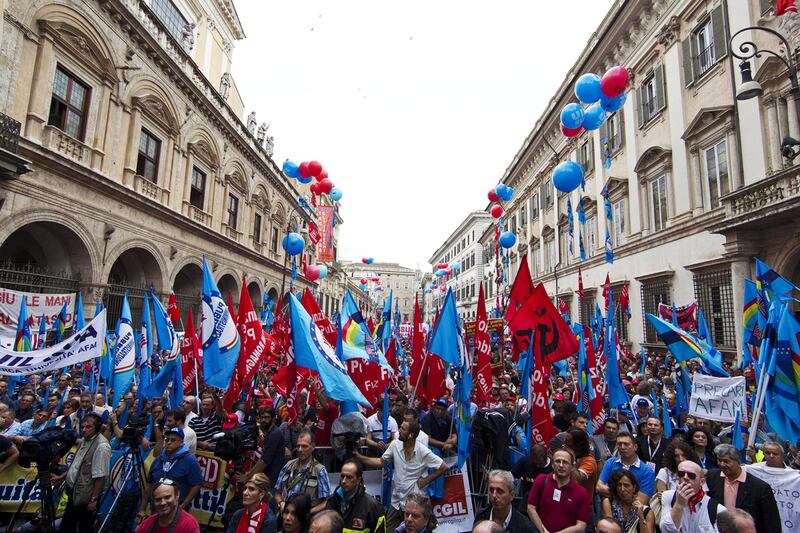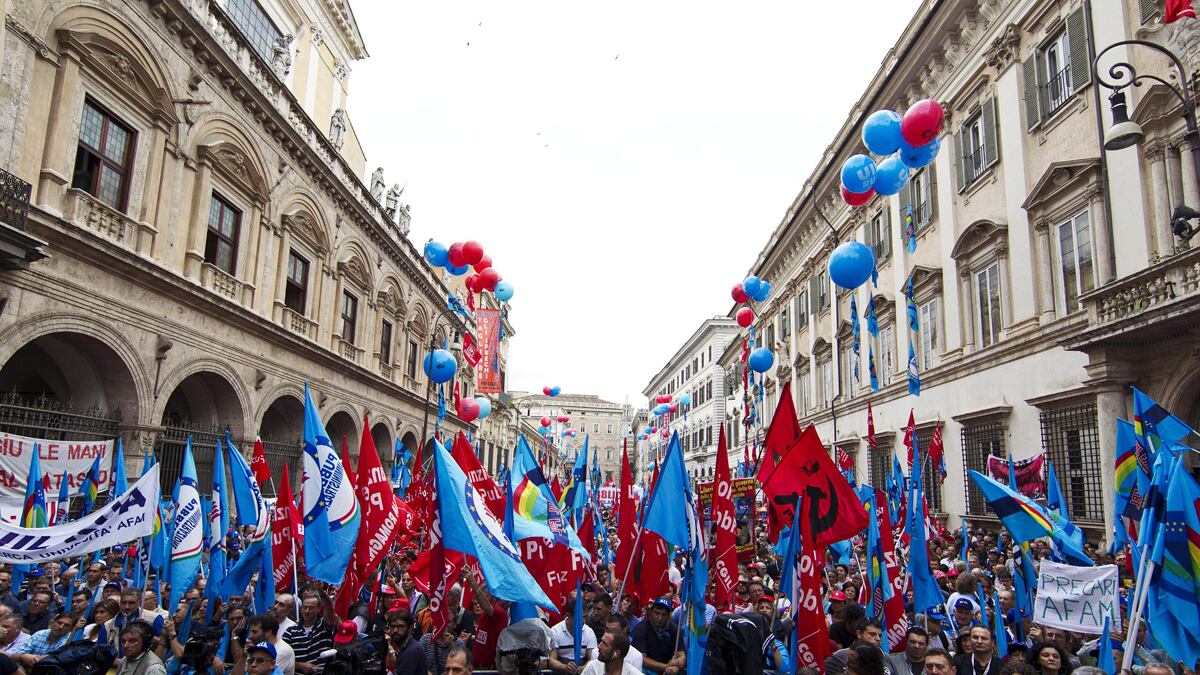The Pignasecca market in central Naples has offered some of the best prices on fresh vegetables in the city for decades. But lately clients are waiting until after the market closes to see what scraps are left over by the vendors, racing the clock against the garbage collectors before they sweep up the produce that has fallen from the stands.
The economic crisis has made life difficult for most Italians, but none have it as difficult as those in the impoverished southern regions known as the mezzogiorno. According to a report by a consumer group SVIMEZ, it would take nearly 400 years for Italy’s south to catch up with the country’s richer northern regions on things like economic growth, industrial investment, and quality of life. Unemployment hovers hear 25 percent in the mezzogiorno where only one in four women works. Those who do have jobs are vulnerable to what SVIMEZ calls the “industrial desertification” of the south, as factories close down or relocate to wealthier regions. Almost 150,000 jobs have been lost in the area since 2007—329,000 people under the age of 25 lost their jobs in the last three years alone, and more than 1.35 million residents have packed up and left for the northern provinces to find a better life.

The risk of a total economic collapse in Italy’s deep south echoes a worrying trend across the 17-member euro zone and larger 27-member European Union, where overall joblessness rose to 11.4 percent and 10.5 percent, respectively, in August, according to Eurostat, which keeps track of statistics for the European Commission. In a statement on the release of the new figures, spokesman Jonathan Todd said that more than a quarter of a million Europeans are now unemployed. “It is clearly unacceptable that 25 million Europeans are out of work,” he said, underscoring that the figure has been growing steadily since the European economic crisis began in 2009.
In Greece and southern Italy, the economic pains are more severe because many people were living in poor conditions even before the 2009 crisis began. In Basilicata and Calabria, hundreds of families are living in houses where electricity has been cut off. Children don’t go to school because no one can afford to put gas in the cars. Families where no one is working have taken to raising animals to provide milk and eggs to survive, according to the SVIMEZ analysis. And the numbers are growing as the price of survival increases. The price of basic groceries has risen nearly 5 percent, which translates to $821 more a year for a family of three and $887 more a year for a family of four.
There are an additional 988,000 Italians living below the poverty line, according to Istat (Italian National Institute of Statistics), bringing the total number of Italy’s poor to more than 10.3 million people. The number could rise even higher as more jobs are cut due to Italy’s debt crisis and continuing austerity measures. According to the Confartigianato (CGIA) association for artisans and craftsmen, there are nearly 1.3 million newly unemployed in the past 24 months, and almost half a million workers on partially subsidized leave, mostly because businesses have had to cut back or close altogether. Only Greece has more persistently poor people. “Southern Italy is likely to bear the brunt of the enduring economic downturn, having suffered the worst effects to date,” said Giuseppe Bortolussi, head of the CGIA. “Most of the new poor are single income families with a large number of children, or those families where the breadwinner is out of work.”
Currently more than 20 percent of Italian children hang in the balance, at risk of falling below the poverty line in southern Italy as the economic situation there worsens. According to UNICEF, there are nearly 2 million children living below the poverty line in families that cannot properly feed, clothe, or vaccinate them. “The poor have got to get out of this crisis alive,” warned Adriano Giannola, president of SVIMEZ, when he presented the depressing survey on the dire situation in the south. “These men and women, young people, elderly, living in dire poverty in this country is unacceptable.”





